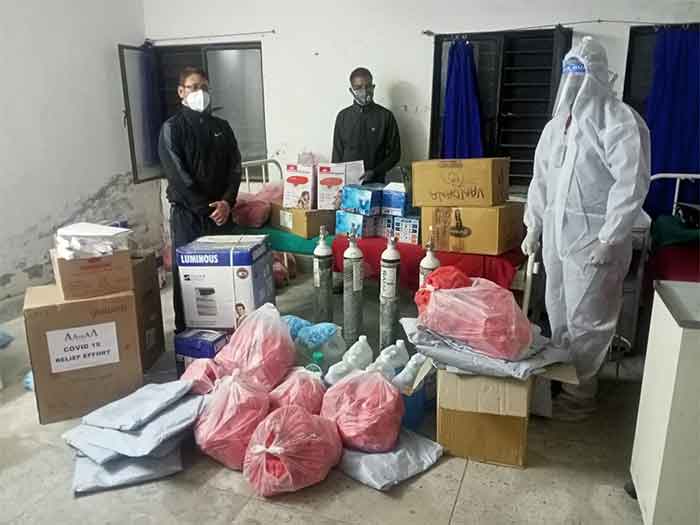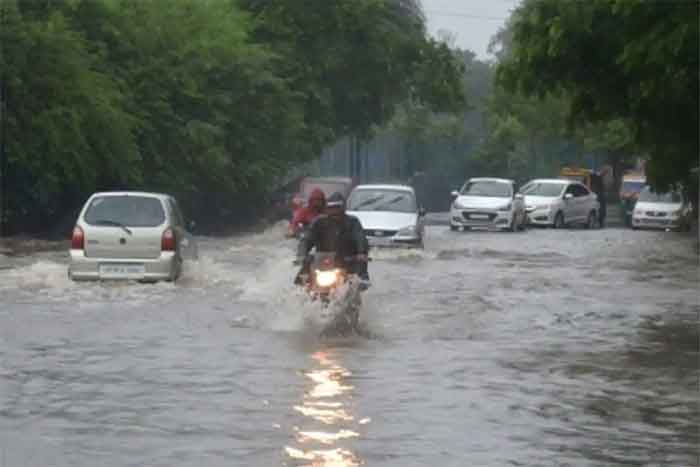
Pauri: When the second wave of COVID-19 gripped Kui village in Pokhra Block of Pauri district, Uttarakhand, it unleashed paranoia among the villagers.
“Most of the locals had fever, cough, cold and loose motions. Yet, they refrained from getting tested, fearing that if they turned out to be positive, the health department officials would take them to the hospital. They said that they had seen on television how kidneys are stolen at the medical facilities. They did not want a check-up and prefered to die in their homes instead,” said Nirmal Sundriyal, a resident of Kui.
Several non-governmental organisations (NGOs) wanted to mitigate such fear and provide relief. However, the amendments made to Foreign Contribution Regulation Act (FRCA) in September 2020 — that demanded mandatory registrations of NGOs under the act and embargos on subcontracting — limited the organisations’ functions. As a result, they were helpless for three weeks between April and May 2021 when the virus rapidly hiked Uttarakhand’s climes. Vaccination was a distant thought roiled in fear. It was only when the Nainital High Court intervened that the state government permitted the NGOs to function.
NGOs restricted as cases rise
 Dehradun-based Making a Difference was one of the NGOs that moved the court. A member of the organisation, Karan Kapur, said, “The government should have asked the NGOs to step in immediately. Instead, we had to seek permission to help people. The second wave had intensified during the first week of May. If the NGOs were permitted to help, the situation could have been pacified.”
Dehradun-based Making a Difference was one of the NGOs that moved the court. A member of the organisation, Karan Kapur, said, “The government should have asked the NGOs to step in immediately. Instead, we had to seek permission to help people. The second wave had intensified during the first week of May. If the NGOs were permitted to help, the situation could have been pacified.”
Sudhi Sundriyal, the Convener of the Feel Good organisation (also known as Bhalu Lagad), which works in the agriculture sector echoed Kapur’s thoughts. He recounted several hurdles that occurred in the last week of April. “We had wanted to help the neighbouring primary health centre (PHC) so that people from Pauri could avail medicines and other equipment. The block development officer said that without the district administration’s nod, they could not allow us to distribute equipment to PHCs and villages,” said Sundriyal, adding, “On one hand, the government is collecting funds from big organisations for its PMCARES coffers; on the other hand, small organisations that are ready to serve the villagers are reduced to seeking permits.”
In Chamoli, 157 km away from Pauri, the situation was no different. JP Maithani, the founder of Alaknanda Ghaati Shilpi (AAGAAS) Federation in Chamoli’s Pipalkoti Panchayat, cited the struggle of Joshimath Vikas Khand’s Dhumak and Kalgoth villages. They are located 12 km and 16 km away, respectively, from the road network. “The hamlets were raging with fever. There was no hope of a health department team traversing the kaccha roads to the villages. We even wrote to the chief health officer of the district, requesting to allow us to help. They refused. This happened at a time when community health centres (CHC) and PHCs approached us for medicines along with thermometer, oximeter, oxygen concentrator and even oxygen cylinders,” Maithani said, as he furbished a few such request letters.
These NGOs filed public interest litigations in Nainital high court to clear the blockade. On May 12, the court instructed the state government to help the organisations working in remote areas. Uttarakhand’s health secretary Pankaj Pandey said, “There was a delay in granting permissions to NGOs because the district administration was occupied. We have no problem in availing NGOs’ help.”
Relief rolls out sketchily
NGOs, like Feel Good, were permitted to work by the third week of May. They immediately distributed the corona kit (containing paracetamol, vitamin C tablets among others), sanitisers, thermal scanners, thermometers and face shields. A health team was dispatched to Mazgaon in Pauri where 31 people tested positive together. According to Sundriyal, “Many people had refused to get tested earlier.”
From the Pokhra block, Jasvinder Singh — a navy attaché — trained youngsters to help people in distress. Nirmala Sundriyal, who was also trained around April, said, “People feel a little secure now that we are regularly inspecting help.”
The AAGAAS Federation also received permission to function in the third week of May. They immediately dispatched the items demanded by the health centres in villages.
And still, many villages were yet to receive the corona kit, thermometer and oximeter by June first week — as confirmed by Uttarakhand health secretary Pandey.
Babita Devi, an Asha worker from Jaspur who lives in Bairagarh of Thalisain Block, said that no team had visited her village by May 31. “When many people fell sick, they bought the medicines from the market and recovered. They were not tested for COVID-19,” she said.
Vaccine misconceptions, distance hamper relief
Misconception about vaccines has pushed the villagers further away from aid that is being received now. A low vaccination rate has created more room for COVID-19 cases. Devi said, “Very few people have taken the first jab. Others are scared — they feel they could die upon vaccination. I have taken the vaccine. When I try to reason with them by giving them my example, they refuse to listen.”
She also believes that the two-hour journey to Thalisain CHC may have deterred many from availing of help. “They have to pay for tickets to travel. If the health department holds a vaccination drive in the villages, people may show readiness,” she said.
In the Gawani village of Chaubattakhal Block (Chaubattakhal Tehsil), the vaccination rate is almost nil. Vimla Devi, who lives in the hamlet, said, “If there is a vaccination drive in our village or in the neighbouring one, we will take the jab. There are many senior citizens who cannot travel far for the vaccine.”
Health secretary Pandey pressed for vaccination at health centres so that in case people fall sick after the vaccine, they can be tended to. “However, we are working on sending mobile vans with a doctor to other villages. PHCs and CHCs are being equipped with oxygenated beds,” he said.
Due to such hurdles, the hilly districts of Uttarakhand have not fared well on the COVID data analysis report by the Dehradun-based SDC Foundation. They released their findings on June 5, stating that of the 11 states in India with the highest mortality rate, six are hilly states. Of these, Uttarakhand tops the list with a two percent fatality rate.
Varsha Singh is Dehradun-based freelance journalist and a member of 101Reporters.com, a pan-India network of grassroots reporters.
GET COUNTERCURRENTS DAILY NEWSLETTER STRAIGHT TO YOUR INBOX














































